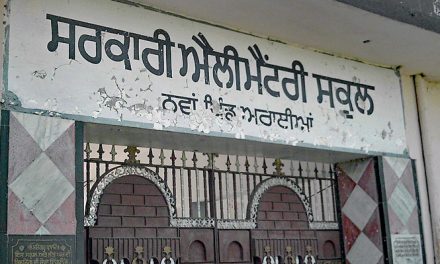For as long as I can remember, I have been juggling the attentions of more than one obsession in my life. I have an abundance of energy and a great deal to offer so have always found it difficult to focus, choosing instead then to devote myself to multiple mistresses. But of course I’m not speaking about my liaisons with the opposite sex (which are limited in non-familial relationships to solely my wife); I’m referring to my love of all things Sikh, Punjabi and current.
Last week I was asked to speak at the University of Hertfordshire to contrast the Sikh lifestyle with Punjabi culture. My presentation was well received (at least it was by those who have spoken to me since), in no small part because I provide an overview of what is meant when we say Punjabi culture or Sikh lifestyle. The two are not incompatible, but there is a clear distinction in certain elements. What I have come to learn from this and similary-titled lectures that I have previously given though, is just how little we actually understand about what is Punjabi culture, the Sikh lifestyle, or even modernity, or western culture. Many people allow their limited experiences of others, whom they have deemed to represent an entire culture or lifestyle, to colour their judgement about what constitutes that area of living. So for example, the excessive consumption of alcohol by people of a Punjabi background has given rise to the unfounded notion that Punjabi culture is rooted in becoming inebriated, that Punjabis like their drink. Similarly, the tendency not to dance publicly by many Sikhs has propelled the myth that Sikhs do not dance, that it is forbidden. The reality in both of these scenarios and umpteen more, is altogether more grey – not as black and white as we might think.
This topic is one of great importance to me personally; not specifically how it is that I live as both a Sikh and a Punjabi (and one residing in the West at that), but how we as human beings are more than just one of the labels which is attributed to us. In that light, my role as founder and an organiser of University team bhangra competition, Capital Bhangra, brings things into sharp focus. Bhangra is the most commonly known, and performed, Punjabi folk dance from the sub-continent. It is also the term applied to a genre of music that is today very far removed from what it once was, drawing influence from musical styles that have been adopted by settling Punjabi migrants and a Punjabi population increasingly exposed to World music. Perhaps because of the latter, bhangra has a bad reputation in many Sikh circles and on more than one occasion I have been quizzed for my role in putting on Capital Bhangra. This comes not only from fellow Sikhs, but also people of other persuasions who “don’t think it’s right that religious people with long beards get involved“. It is suggestive of the point I made earlier, that many people lack any real comprehension of what something is, in this case the Punjabi folk dance of bhangra. Instead of it reflecting athleticism, teamwork, and rural life, they associate it with conspicuous consumption, machismo and misogyny.
The purpose of this article is not to discuss what Sikhi says about bhangra (yes, I realise that statement is an oxymoron), or even more widely about dance. As with the lecture I delivered last week, what I want to express is that we are more than just a single label and that the labels themselves which we apply are not encased and independent, but open and coloured by one another. As a Sikh my life is entirely influenced by the way of life espoused by Guru Nanak and it dominates over anything else that I am, but it does not preclude me from identifying by other labels too. I reside in the West, am of Punjabi background, and enjoy the age in which we live (modernity) – all the while retaining my identity as a Sikh. My inclination to do away with compartmentalising what I do in my life has naturally transferred over to the work we do at NAUJAWANI.com, but not without problems: to some Sikhs, we are too Punjabi; for some Punjabis we are too Sikh. It is both an unenviable and unique space to occupy which has an unwelcome impact on our associated events like Capital Bhangra – much of our regular audience and fans of our work avoid Punjabi-centric events like a bhangra competition because of the environment that they perceive it will be held in, while many of our Punjabi readers and followers don’t want to go to an event where alcohol is not served and you might face a long-bearded, turbaned individual who reminds you of the Gurdwara.
There is only one of me; indeed, there is only one of anybody. Being a Sikh, identifying as Punjabi, and living in the West, are not competing lanes in the running track that is my life; they reside all at once and make me who I am. Events like Capital Bhangra are something that will always be part of my life for reasons best explained by my fellow writer Biravtar Singh in this article from last year. As he said then, “It’s more than a bhangra competition; it’s a great day out for the whole family, especially your parents or grandparents who have wonderful memories back in Punjab from their youth, but now have accustomed to British lifestyle.” Capital Bhangra is being held on Sunday 1 March, tickets are available online.





